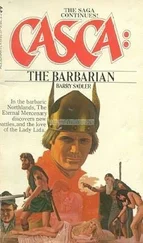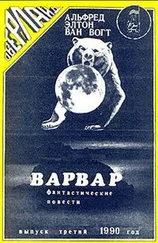
The Englishman washes himself with great regularity. Nevertheless, to the Hindu he is the symbol of defilement and uncleanliness. The Hindu can hardly think of him without vomiting.
This is because the Englishman is continually soiled by various contacts that the Hindu carefully avoids.
Few creatures bathe themselves as frequently as the Hindu.
At Chandernagor, which is smaller than Asnières, there are sixteen hundred ponds, plus the Ganges, whose waters are sacred. Well, you can pass by at any hour of the day, and you will rarely find one of them unoccupied. And the Ganges, of course, does not remain empty. The Ganges does not flow with distilled water, naturally. One takes it as it comes. The water in the ponds likewise. If this water were clean one would not dirty it on purpose before bathing oneself.
And in the water, the Hindu’s behavior is serious. Very erect, the water up to his knees. From time to time he stoops down, and the sacred water of the Ganges passes over him, and he gets up. He spends some time in this manner; he also washes his dhouti . 4He is particularly careful to wash his teeth. He establishes relations with the sun by prayer, if he sees it.
But no laughing. Near some of the great urban centers, however, in the vicinity of jute factories, you sometimes see, though rarely, a few rascals trying to do the ‘crawl.’ The ‘crawl’! Swimming! swimming, in sacred water. One or two have even been seen to splash each other. These sights, happily, are rare, rare and without a sequel.
Yet, in spite of it all, Hindu dirt is proverbial.
Curiously enough, when their painters make pictures of their filthy interiors, of their people in rags, the pictures are perfectly clean. The dirt is indicated quite cleanly. The rents in the rags are clean, the spots are clean; which seems to imply that they lack nothing.
Whereas, when you look at European pictures of the nineteenth century, you only find coal merchants in them, leprous houses and walls, slimy faces, dirty interiors.

The Hindu is a reinforced being. He reinforces himself by means of meditation. He is high-pressured.
There is a difference between a European and a Hindu, a difference like that between silence and a note on an organ. The Hindu is always intense, his repose is positive. The white man’s repose is zero, or ràther it is minus x.
The Hindu is a sensualist: he takes delight slowly.
The exceptional place that he occupies in the spiritual world is due to the fact that he has always sought enjoyment in satisfying the most remarkable appetites.
In religion and in sacrifice, in adoration, in magic power and… in an extraordinary vanity.
The rajahs have trained thousands of Hindu menials for thousands of years to be cringing cowards.
And this cringing, inconceivable to one who has not seen it, is more frightful, more painful to behold than all the miseries and the famine and the endemic cholera.
This cringing of caste, the cringing born of three thousand years of male and female cringing, was made for their benefit. And look at the result.
Only princes and quite rich people use Royal Yakuti .
These are the headlines of a stupendous advertisement. For a patent medicine, and not such a tremendously high-priced one at that.
This advertisement with its appeal to the flashy has done more to sell the stuff than a hundred thousand medical certificates.
Without their vanity, the institution of caste would not have held out for three thousand years.
Christian converts have had a partition built in the cathedral at Pondicherry to separate the castes.
I am a Christian, but of the Brahmin caste!
When a creature that is nothing colors his nothingness, possibly it makes him happier, but he is twice nothing to others.
No one knows to what extent people of inferior caste can be stupid, absolutely stupid and impervious where intelligence, or rather presence of the spirit is concerned.

Most of them tall and slender, with no shoulders, no calves of the legs, no muscles, very feminine, the face often flat, with eyes like a toad, never taken off you and from which nothing is to be extracted. Hairdressers’ dummies.
Not meditative, but sticky, or rather, stuck.
A brilliancy in their gaze such as beauty products give, which gives you pleasure to look at, but which you will not turn to see again.
Admirable black hair, very vivid, supple, long.
Some fine faces — those of well-born people (extremely rare).
Some old men, with magnificent heads, veritable fathers of humanity, ancestors of music and of wisdom, harmoniously developed.
Nowhere is there a sparkle.
Faces of amoral people who are content, and of false witnesses who are justified.
No humanity whatsoever.
The Hindu’s mind is not actually on beauty. Beauty is not what matters. They can do without it. They have none in their homes. Neither in their houses nor elsewhere.
If they must have beauty, then it will be a superabundance, the lascivious, the rococco. 5
But they prefer ‘nothing at all.’
Their paintings and sculptures were, however, very beautiful, were beautiful almost in spite of themselves. The Hindu has the taste, the feeling and the vice for seduction, but also for the academic. The Hindu likes recipes, figures, strict symbols, grammar.
When I arrived in Colombo, and went into the museum, a celebrated one, mind you, I began after a while to run instead of walk through the rooms. I was in despair. Oh! Academy! Ah! the apes! Little do I care whether it be a first- or a second-class ape. When all of a sudden I saw something. In one of the fresco rooms. Awkwardness, impulsiveness, an excited groping, an eagerness to excel, an emotion that springs from daylight and from warm bodies executed in a style as yet ill-defined, the attitudes, all surprise and willingness — the frescos of Sigeriya (sixth century) (Buddha preaching at the Court of the Queen, etc.). So they too once had their inspiration, a warm and vital inspiration.
This did not happen often. Only the paintings of Ajanta gave me an impression of fellow-feeling. All of it being of the Gupta period, the age also of Kalidasa. It is well to remember that for eight centuries the Hindus have been under the foreigner’s domination (Moslems, English).
The rest is academic stuff with which all immense rooms of the museums are filled, and where, naturally, a lot of old nodding archeologists, who have never written, nor engraved, nor carved anything artistic whatsoever, have laid down the law, and given Europeans the duty of admiring it.

Of all the railway stations in the world, the station at Calcutta is the most remarkable. All the others are eclipsed by it. Only this one is a station.
Not that the building itself is so extraordinary. No doubt it is. But before Calcutta I never fully realized what a station could be.
What is it? a place where people wait for trains.
In Calcutta they really do wait.
There are about twenty tracks and as many platforms.
The entrance to each platform is guarded by an iron gate.
Between these gates and the city of Calcutta is the immense hall of the station.
This hall is a dormitory. Every one of the travelers is to be found sleeping here. In front of the gate that separates them from the approaching train they lie, sleeping with one eye open on their pink valises.
Читать дальше













